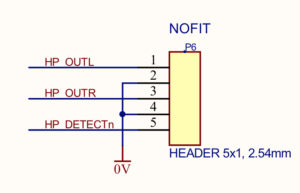
The processor on this handheld is an Intel PXA255 which is a mobile processor based on the ARM XScale architecture. I need to use the zoom at 150% to be able to see this well enough to type without missing mistakes even at 125% I have found that I need to have the text a little bit larger so it is easier to see. This is one of the things that has to be considered when looking into this device.
#Set sunvox to use headphone jack windows
Windows CE, which the Sigmarion III runs, was made for stylus use so interactive screen elements are much smaller. This is the same as the resolution found on some of the newer phones - but they tend to have a smaller, higher definition screen sizes and of course everything is coded for finger instead of stylus use. The resolution on the Sigmarion screen is 800x480, or Wide VGA, also known as WVGA.


The TFT screen is also much better for use outside as the display doesn't wash out on you and as the screen is an active instead of a passive matrix color definition is far superior. This also makes it very nice to watch videos on the device. So, what makes a TFT screen better than a DSTN screen anyway? For one, the response rate is much higher, which means there is less motion blurring when you type or play a game.
#Set sunvox to use headphone jack Pc
Unlike most of the Handheld PC (H/PC) class of devices, this one has a TFT screen instead of the more common DSTN screen as seen on the old NEC MobilePro 780, or even the newer NEC MobilePro 900c - a device that would have competed with the Sigmarion III when it was still a new device. The first and most significant thing that I want to bring up is the screen. This is where I will start the review the devices specifications. Since this is technically a PDA, it is rather large but if you see it as more of a miniature laptop, it is pretty tiny and in fact the keys themselves are a little hard to get used to using. Despite this the Sigmarion III is a device that I still find useful even if I can’t get my wireless card to work while I am typing this all up on the unit using TextMaker 2002. Today, everything has to be a phone and have access to services like Facebook. Now you may be wondering just what is so special about a device that cannot go online without adding a WiFi card that itself is not always easy to find. There is also no dial up modem or LAN port so you have to add your own. There is no WiFi or Bluetooth, unless you have a compact flash card that you want to use. From what I have been told NTT Do Co Mo is a Japanese cell phone company, but the Sigmarion III is no phone, nor does it have any kind of wireless features except an IrDA port which was common on PDA's at the time. This handheld is made by NEC under the NTT Do Co Mo brand.
:max_bytes(150000):strip_icc()/39941826883_92f36c9e0a_k-5c645b07c9e77c00010a504a.jpg)
In fact some core programs like the calendar and address book are still in Japanese!įirst things first, I want look at the hardware side of the Sigmarion III. While I had used the English MUI package posted here to translate much of the interface into something I could read, not everything seems to have translated. Of course the Sigmarion III is a Japanese language device, released for the Japanese market. If this review is not good enough, I have a feeling that Tsubasa will hunt me down to write a better one! (I'll explain later).

Part of my getting this amazing little device was that I had agreed to write a very good review. I am typing this review up using the Sigmarion III and while the typing may not be fast, I am getting somewhat better at using this tiny keyboard. Yet this has been one of those times that passing over something I wanted has turned out to have a happy - although much later than I had hoped for - ending. I didn't have the money to spend on another old PDA at that time, so I just let the feeling pass for the most part. The Sigmarion III is one of those things that when I saw it online, I really wanted one for a long time.


 0 kommentar(er)
0 kommentar(er)
